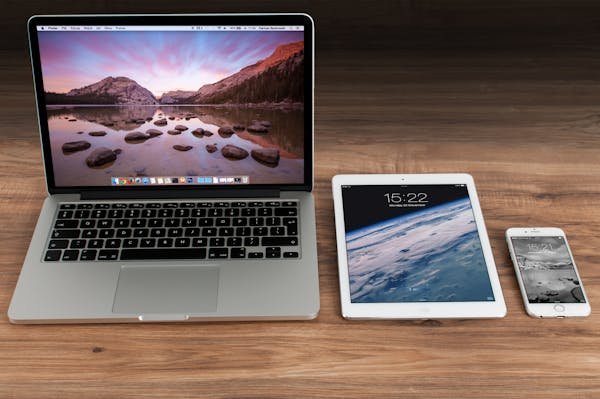Marketing flyers are a versatile and effective tool for promoting your business, event, or service. Despite the rise of digital marketing, flyers remain a powerful way to reach your audience, especially in local communities. Creating an impactful marketing flyer involves a blend of strategic design, compelling copy, and clear messaging.
Understanding Your Audience
The first step in creating an impactful marketing flyer is understanding your target audience.
Knowing who you are trying to reach will influence the design, content, and distribution of your flyer.
Identifying Your Target Audience
Identify the demographic characteristics of your audience, such as age, gender, location, and interests. Consider what problems they are facing that your product or service can solve.
This understanding will help you craft a message that resonates with them.
Tailoring Your Message
Your message should be tailored to address the specific needs and interests of your audience. Speak directly to them, using language and visuals that they find appealing and relatable.
The more personalized your flyer feels, the more likely it is to capture their attention.
Crafting a Compelling Headline
The headline is one of the most critical elements of your flyer. It’s the first thing people will read, and it needs to grab their attention immediately.
Making it Attention-Grabbing
Your headline should be bold and engaging. Use strong, action-oriented words that provoke curiosity or highlight a key benefit.
For example, instead of “Summer Sale,” try “Unbelievable Discounts This Summer!”
Keeping it Clear and Concise
While your headline should be engaging, it should also be clear and to the point. Avoid overly complex language or jargon that might confuse your audience.
The goal is to convey the main message in a few impactful words.
Designing for Visual Impact
A well-designed flyer catches the eye and encourages people to read more. Your design should be both attractive and functional.
Choosing the Right Colors
Colors play a significant role in the effectiveness of your flyer. Choose colors that align with your brand and evoke the desired emotional response from your audience.
For instance, blue can convey trust and professionalism, while red can create a sense of urgency.
Utilizing High-Quality Images
Images can enhance the visual appeal of your flyer and help convey your message quickly. Use high-quality images that are relevant to your content.
Avoid cluttering your flyer with too many images; a few well-chosen visuals are more effective.
Ensuring Readability
Ensure that your flyer is easy to read. Use large, legible fonts for the headline and key points. Keep your text short and concise, and break it up with subheadings and white space to make it more digestible.
Writing Persuasive Copy
The copy on your flyer should persuade your audience to take the desired action. It should be clear, concise, and compelling.
Highlighting Benefits
Focus on the benefits of your product or service rather than just the features. Explain how it can solve a problem or improve the reader’s life.
For example, instead of saying “Our fitness program includes 10 classes,” say “Get fit and feel great with our 10-class fitness program!”
Using a Call to Action
A strong call to action (CTA) is essential for driving engagement. Clearly instruct your audience on what to do next, whether it’s visiting your website, calling a phone number, or attending an event. Make your CTA stand out by using bold text or a contrasting color.
Structuring Your Flyer for Maximum Impact

The structure of your flyer should guide the reader’s eye naturally through the content, from the headline to the call to action.
Structuring Your Flyer for Maximum Impact
Creating a Visual Hierarchy
A well-structured flyer guides the reader’s eye through the content in a logical and engaging manner.
This involves creating a visual hierarchy that highlights the most important elements first.
Emphasizing Key Elements
Place the most critical information at the top of your flyer, such as the headline and main offer. Use larger fonts, bold text, or contrasting colors to make these elements stand out.
The goal is to ensure that even a quick glance conveys the essential message.
Strategic Use of White Space
White space, or negative space, is the area of the flyer that is left blank. Strategic use of white space helps prevent your flyer from looking cluttered and makes it easier for the reader to focus on the important elements. It creates a clean, professional look and improves readability.
Guiding the Reader’s Journey
Design your flyer so that the reader’s eye naturally follows a path from the headline through the body text to the call to action. This can be achieved through visual cues like arrows, lines, or the arrangement of text and images. Ensure that the flow is logical and intuitive, making it easy for the reader to absorb the information.
Balancing Visual and Textual Content
Finding the right balance between visuals and text is crucial for an effective flyer. Too much text can overwhelm the reader, while too many images can distract from the message. Aim for a harmonious blend where visuals support the text and enhance understanding.
Using High-Impact Visuals
Select visuals that are not only attractive but also relevant to your message. High-impact images or graphics can draw attention and evoke emotions that reinforce your message.
Ensure that the visuals are high quality and aligned with your brand’s aesthetic.
Structuring Text for Clarity
Break your text into easily digestible sections. Use subheadings to divide different parts of the message and make it easier for the reader to scan the content.
Short paragraphs and concise sentences improve readability and ensure that key points are communicated effectively.
Incorporating Design Consistency
Maintain design consistency throughout the flyer to create a cohesive look. This includes using a consistent color scheme, font styles, and visual elements.
Consistency helps reinforce your brand identity and makes the flyer look polished and professional.
Highlighting the Call to Action
The call to action (CTA) is one of the most important parts of your flyer.
It should be prominently displayed and easy to find. Use design elements like bold text, bright colors, or a distinct button-like appearance to draw attention to the CTA.
Clearly instruct the reader on what action to take, whether it’s visiting a website, calling a phone number, or attending an event.
Testing Different Layouts
Before finalizing your flyer, test different layouts to see which one is most effective. Create multiple versions and get feedback from colleagues or focus groups.
This can provide insights into what works best and help you refine the design for maximum impact.
Incorporating Brand Elements
Your flyer should reflect your brand’s identity to build recognition and trust.
Using Your Logo
Your logo is a critical element of your brand identity. Place it prominently on the flyer, preferably at the top or bottom, to ensure it’s one of the first and last things the reader sees.
This reinforces brand recognition and association.
Consistent Brand Colors and Fonts
Use the same colors and fonts that are associated with your brand. Consistency in these elements helps create a cohesive look and feel, making your flyer immediately recognizable as part of your brand’s materials.
Printing and Distribution
Even the best-designed flyer won’t be effective if it’s not printed and distributed properly.
High-Quality Printing
Invest in high-quality printing to ensure your flyer looks professional. Choose the right paper stock that feels substantial and conveys quality.
Glossy or matte finishes can also affect the perception of your flyer, so choose one that aligns with your brand image.
Strategic Distribution
Distribute your flyers in locations where your target audience is likely to see them. This could include local businesses, community centers, events, and direct mail.
Consider partnerships with other businesses that cater to your audience for co-distribution opportunities.
Strategic Implementation for Startups
Aligning with Marketing Goals
Ensure that the structure and content of your flyer align with your broader marketing goals. For startups, this could mean focusing on brand awareness, lead generation, or product launches.
Tailor the flyer’s design and messaging to support these objectives effectively.
Leveraging Data Insights
Use data insights from previous marketing campaigns to inform your flyer design. Analyze what has worked well in the past and apply these learnings to your flyer.
This data-driven approach can increase the likelihood of success.
Monitoring Performance Metrics
Track key performance metrics, such as response rates and conversion rates, to evaluate the effectiveness of your flyer.
Use this data to make informed decisions and continually optimize your flyer design and distribution strategies.
Leveraging Digital Tools for Flyer Creation

In today’s digital age, numerous tools and platforms can help you create professional, impactful flyers without the need for advanced design skills.
Design Software
Consider using design software like Adobe InDesign, Illustrator, or Photoshop.
These tools offer advanced features that allow for precise control over your flyer’s layout, colors, and typography.
For those who may not have design expertise, online tools like Canva and Piktochart offer user-friendly interfaces with customizable templates that can make flyer creation straightforward and efficient.
Choosing the Right Tools
For startup founders, selecting the right digital tools for flyer creation is crucial. The right tools can streamline the design process, enhance creativity, and ensure a professional outcome.
Canva
Canva is a versatile and user-friendly design tool perfect for startups.
It offers a wide range of templates specifically designed for marketing flyers. With drag-and-drop functionality, you can easily customize these templates to fit your brand’s aesthetics.
Canva also provides access to a vast library of stock images, icons, and fonts, allowing you to create visually appealing flyers without the need for advanced design skills.
Adobe Spark
Adobe Spark is another excellent tool for creating marketing flyers.
It offers a professional-grade design experience with a more straightforward interface compared to other Adobe products. Adobe Spark allows you to create flyers that can be easily integrated with other Adobe tools if you need more advanced editing options later.
This tool is ideal for startup founders who want high-quality designs without investing too much time in learning complex software.
Piktochart
For those looking to create data-driven flyers, Piktochart is an invaluable tool.
It specializes in creating infographics but can be equally effective for flyer design. Pikto chart allows you to incorporate charts, graphs, and other visual data representations seamlessly into your flyers.
This can be particularly useful if you’re promoting events, reports, or any other information-heavy content.
Crello
Crello offers a wide array of templates and design elements that are perfect for flyer creation. Similar to Canva, it provides an intuitive interface that allows you to create professional designs quickly.
Crello is especially useful for startups with a need for ongoing social media content, as it offers templates for various digital formats that ensure brand consistency across different platforms.
Strategic Use of Digital Design Elements
Consistency in Branding
Maintaining consistency in branding across all your marketing materials is crucial. When using digital tools, make sure your flyers align with your overall brand identity.
This includes using your brand’s color palette, fonts, and logo consistently.
Digital tools often allow you to save brand elements, making it easier to apply them uniformly across all your designs.
High-Quality Visuals
Invest in high-quality visuals to make your flyers stand out. Digital tools offer access to vast libraries of professional images and icons. Use these resources to enhance the visual appeal of your flyers.
For startup founders, using high-quality visuals can convey professionalism and build trust with potential customers.
Incorporating Interactive Elements
With digital flyers, you can incorporate interactive elements that are not possible with traditional print flyers.
For instance, add clickable links that direct users to your website, social media pages, or event registration forms.
This can significantly increase engagement and drive traffic to your digital platforms. Most digital design tools support the integration of these elements, making it easy to enhance your flyers’ functionality.
Incorporating Testimonials and Social Proof
Including testimonials and social proof can significantly enhance the credibility of your flyer and persuade potential customers to take action.
Featuring Customer Testimonials
Select a few compelling testimonials from satisfied customers. Highlighting positive experiences and outcomes can build trust and show potential customers the value of your product or service. Ensure the testimonials are brief and to the point, and include the customer’s name and, if possible, their photo to add authenticity.
Showcasing Awards and Certifications
If your business has received any awards, certifications, or recognitions, feature these on your flyer. This adds an element of authority and professionalism, reassuring potential customers of your credibility and expertise.
Utilizing QR Codes and Digital Integration
Integrating digital elements into your flyer can enhance engagement and provide additional information without cluttering the design.
Adding QR Codes
QR codes can be a highly effective way to connect your flyer to your digital presence. Use QR codes to direct readers to your website, social media profiles, or a specific landing page.
Make sure the QR code is prominently placed and tested to ensure it works correctly.
Linking to Digital Resources
Include links to digital resources such as instructional videos, e-books, or online galleries. This can provide additional value to the reader and make your flyer an interactive experience.
Clearly indicate what readers can expect when they scan the QR code or visit the link, making it an enticing proposition.
Focusing on Clear and Actionable Messaging
Your flyer’s message should be clear, direct, and actionable, guiding the reader towards taking the desired next step.
Clear Value Proposition
Clearly state what makes your product or service unique and why the reader should choose you. This value proposition should be immediately apparent and resonate with the reader’s needs and interests. Avoid vague statements and focus on specific benefits.
Strong Call to Action
Reiterate your call to action multiple times throughout the flyer, ensuring it stands out. Use compelling language that motivates the reader to act, such as “Call Now,” “Visit Us Today,” or “Claim Your Discount.” Ensure that the call to action is easy to follow, providing all necessary details like phone numbers, addresses, or URLs.
Ensuring Compliance and Professionalism
It’s important to ensure that your flyer is not only effective but also compliant with relevant laws and professional standards.
Legal Disclaimers
Include any necessary legal disclaimers related to your product or service. This might involve terms and conditions for offers, privacy policy statements, or disclaimers for medical or financial advice.
Ensuring compliance protects your business and builds trust with your audience.
Proofreading and Quality Checks
Before printing and distribution, thoroughly proofread your flyer for any errors or inconsistencies. A flyer free of typos and mistakes looks professional and reflects well on your brand.
Consider having a colleague or professional proofreader review the content to catch any issues you might have missed
Future Trends in Flyer Marketing
Staying ahead of trends can help you make your flyer marketing more effective and relevant.
Interactive Elements
The integration of augmented reality (AR) can make your flyers interactive. AR can provide additional content such as videos, 3D models, or interactive experiences when viewed through a smartphone app.
This can significantly enhance engagement and make your flyer stand out.
Eco-Friendly Materials
With increasing awareness of environmental issues, using eco-friendly materials for your flyers can appeal to eco-conscious consumers.
Recycled paper and biodegradable inks can reduce your campaign’s environmental footprint and enhance your brand’s image as environmentally responsible.
Comparing Flyer Marketing to Other Marketing Methods

Cost-Effectiveness
Flyer marketing can be a very cost-effective way to reach your audience, especially for small businesses or local events.
The cost of designing, printing, and distributing flyers is often lower compared to other forms of advertising such as TV or radio ads.
Additionally, online design tools and local print shops offer affordable solutions for high-quality flyer production.
Targeted Reach
Flyers allow for highly targeted distribution. You can place them in locations where your target audience frequents, such as local cafes, community centers, and retail stores.
This targeted approach can be more effective than broader advertising methods like billboards or newspapers, which may reach a less specific audience.
Tangibility and Recall
Physical flyers have a tangibility that digital ads lack. They can be held, read, and even kept for future reference, increasing the likelihood of recall.
This physical presence can make a lasting impression, especially when the flyer design is striking and memorable.
Direct Engagement
Flyers offer a direct way to engage with your audience.
Handing out flyers in person at events or in busy areas allows for face-to-face interaction, which can create a personal connection and immediate feedback.
This direct approach can be particularly effective for local businesses looking to build community relationships.
Immediate Call to Action
A well-designed flyer can prompt immediate action. Whether it’s attending an event, visiting a store, or redeeming a discount, the clear and direct nature of flyer messaging can drive quick responses.
This immediacy is often more challenging to achieve with digital ads, which can be easily ignored or forgotten.
Integrating Flyers with Other Marketing Strategies
Combining flyer marketing with other strategies can amplify your overall marketing efforts.
Multi-Channel Campaigns
Incorporate flyers into a multi-channel marketing campaign that includes social media, email marketing, and digital ads. For example, promote the same event or offer across all channels, using flyers to reinforce the message in physical spaces.
Consistent branding and messaging across different platforms can strengthen the impact of your campaign.
Event Marketing
Flyers are particularly effective for event marketing. Distribute them in the weeks leading up to an event to build anticipation and ensure high attendance.
Use flyers to provide all necessary details such as date, time, location, and highlights of the event.
Including a map or QR code that links to an online event page can offer additional convenience for attendees.
In-Store Promotions
For retail businesses, flyers can enhance in-store promotions. Place flyers at the checkout counter, in shopping bags, or near the entrance to inform customers about ongoing sales, new products, or upcoming events. This in-store visibility can increase foot traffic and sales.
Community Engagement
Flyers can be a powerful tool for community engagement. Use them to promote community initiatives, charity events, or local partnerships. Distributing flyers at local gatherings, schools, and businesses can foster a sense of community involvement and support for your brand.
Adapting to Changing Trends
Marketing trends are constantly evolving, and it’s important to adapt your flyer strategies accordingly.
Digital Integration
Integrate digital elements into your flyers, such as QR codes or augmented reality (AR) features. These technologies can bridge the gap between offline and online experiences, providing additional content and interactivity.
For example, a QR code could link to a video demonstration of a product, while AR could offer a virtual tour of an event venue.
Sustainability Practices
Adopting sustainable practices in your flyer production can appeal to environmentally conscious consumers. Use recycled paper and eco-friendly inks, and highlight your commitment to sustainability on the flyer itself.
This not only enhances your brand image but also aligns with growing consumer preferences for sustainable products.
Personalization
Personalizing your flyers can increase their effectiveness. Tailor the content and design to specific segments of your audience, such as different age groups, locations, or interests.
Personalized flyers can make a stronger connection with the recipient, increasing the likelihood of engagement.
Wrapping it up
Creating impactful marketing flyers is a blend of strategic design, compelling copy, and effective distribution. By understanding your audience, crafting a strong headline, designing for visual appeal, and leveraging both traditional and digital tools, you can produce flyers that capture attention and drive action.
Utilize high-quality visuals, maintain brand consistency, and incorporate interactive elements to enhance engagement. For startup founders, these strategies offer a roadmap to creating flyers that not only stand out but also contribute to your overall marketing goals.
Continuously measure and adapt your approach to ensure your flyers remain effective and impactful. With the right tools and techniques, your flyers can be a powerful component of your marketing arsenal.
READ NEXT:
- Celebrating Social Media Day: Tips and Ideas
- Elevate Your Property Listings with Social Media Content Ideas for Commercial Real Estate
- How to Design Business Cards for Social Media Marketing Professionals
- Joyful Pregnancy Announcement Ideas for Social Media
- Building Your Brand: Social Media Ideas for Authors






















Comments are closed.